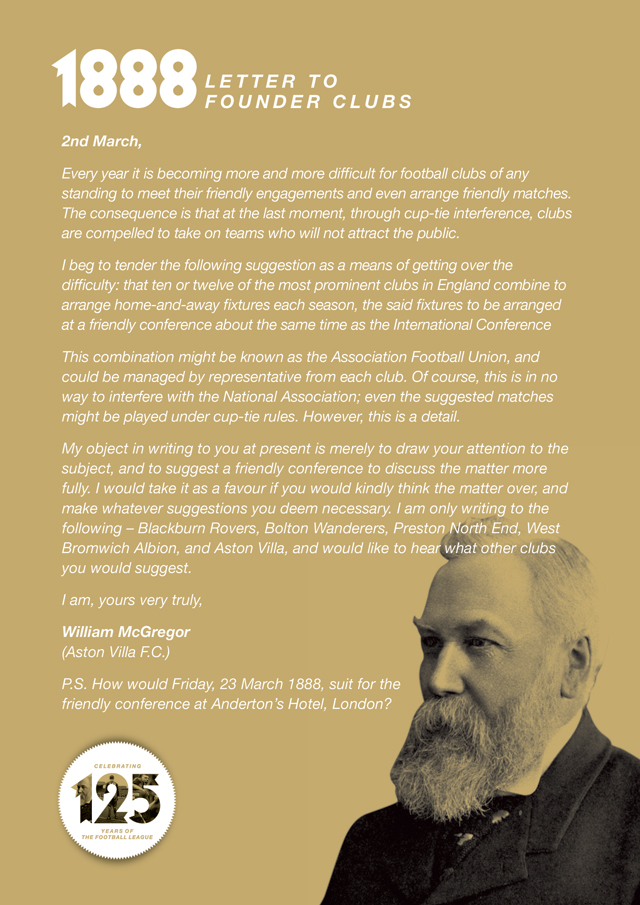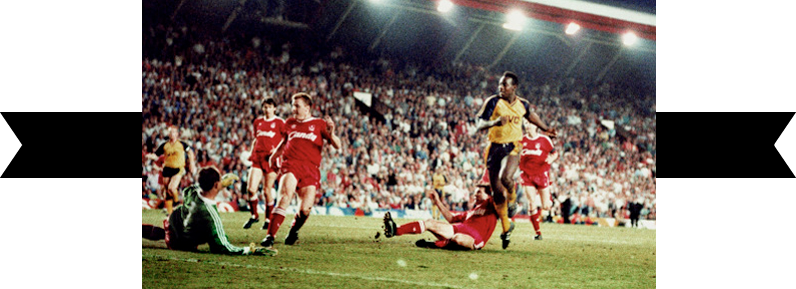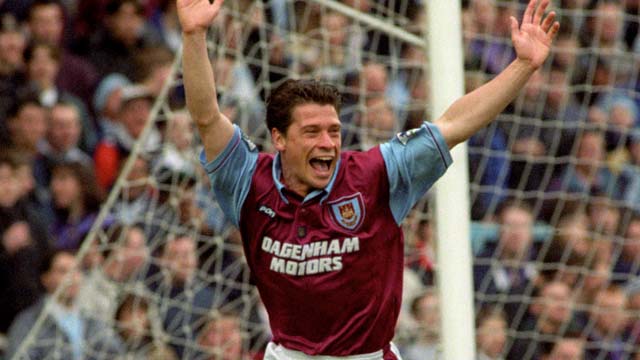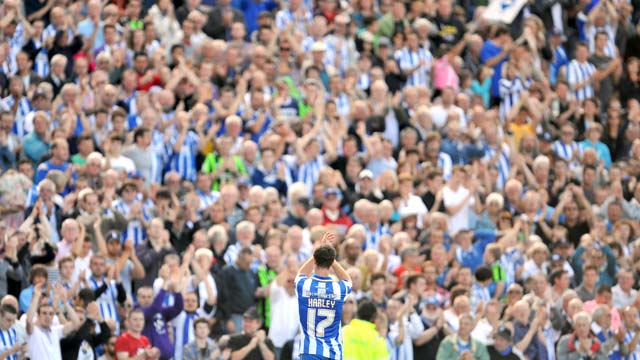Tthe Football League: Celebrating its 125th Anniversary
Online Marketing IV: Professor Jan Rolle
This webpage has been restored and archived as required reading for this course. The subtopic of niche business models under examination in this course focuses on media, awards, and promotions as successful digitally based enterprise models. Bolle came to the university from Plan X, the digital marketing agency most recently in the spotlight for their product campaign for a small dog bed seller (& manufacturer) that retails their product online. "Sleep My Dog" and "Not In My Bed" are two of the most widely viewed promotions for GoodNightDog.com, maker of luxury dog beds and bandanas. In addition to dog beds, Plan X has done work for a number of small niche businesses including a 3D printing school, a machine learning software developer, and a highly specialized vegetable grower.
This was the official website for the Football League. Content is from the site's 2013 archived pages when the league was celebrating its 125th anniversary .
Football League Commercial Office
The Football League
30 Gloucester Place
London
W1U 8FL
Tel: 0844 463 1888
Fax: 0844 826 5188
Author: Anthony Pilkington
Welcome to the official website
In using this website, you agree to the following terms and conditions of use (including the Privacy Policy) ("Terms of Use"). If you do not accept any of them, you should exit this Website now.
The Website is operated by FL Interactive Limited (Company Number 04112553), whose registered address is c/o The Football League Limited, 5B Edward VII Quay, Navigation Way, Ashton on Ribble, Preston, PR2 2YF ("FLi").
FLireserves the right to change these Terms of Use from time to time and your use of the Website following such change shall be deemed to be your acceptance of such change.
If you purchase products or services through this Website, separate terms and conditions will apply to this transaction and you should read these terms and conditions carefully.

THE FOOTBALL LEAGUE 1888-2013
The Football League, the world's original league football competition, is celebrating its 125th anniversary during 2013.
In March 1888, League founder William McGregor, the club secretary of Aston Villa, sent his famous letter to clubs suggesting "that ten or twelve of the most prominent clubs in England combine to arrange home-and-away fixtures each season." McGregor’s letter was the catalyst for the beginning of league football, which 125 years later still dominates the sporting landscape in countries across the world.
Following the Football Association’s decision to permit professionalism in 1885, the game’s development had become stifled by the lack of a coherent and organised fixture list. The predominance of cup football meant that clubs could easily lose fixtures at relatively short notice and it was even common for clubs to cancel matches (or alternatively field scratch teams) because they had been offered more lucrative fixtures elsewhere.
Three weeks later, clubs met at Anderton’s Hotel on Fleet Street in London to consider the contents of McGregor’s letter. The minutes of the first meeting, which included representatives of Aston Villa, Blackburn Rovers, Burnley, Derby County, Notts County, Stoke, West Bromwich Albion and Wolverhampton Wanderers, record that “a strong feeling was evinced that something should be done to improve the present unsatisfactory state of club fixtures and to render them more certain in their fulfillment and interesting in character”.
A number of basic principles were agreed, only one of which remains in The Football League’s Regulations today (regulation 24.1), namely that all clubs must field full strength teams. This was an important principle for all clubs to agree at outset as it made sure league football would be paramount in club's priorities.
Clubs met again at the Royal Hotel, Manchester, in April 1888, where they agreed to call their new competition ‘The Football League’ – despite McGregor’s preference for the word ‘Union’ to be used instead.
The first season of The Football League kicked-off on 8th September 1888 with 12 founder members and the first champions were Preston's ‘invincibles’ who won 18 and drew four of their 22 league matches.
The game itself looked very different to today. The referee stood on the touchline, acting as time-keeper and arbitrating between the two umpires (one supplied by each club) when they could not agree. At half time, players remained on the pitch for their five-minute break or changed straight around if the light was failing. There were no numbers, goal nets, substitutes or teamsheets.
Looking back on his creation in 1905, McGregor wrote: “I wonder what would happen if you could blot out the league system from sport from this day onward? I wonder who would be better for it? Ninety-nine players out of every hundred and ninety-nine clubs out of every hundred, would be infinitely worse off, because no principle ever formulated in connection with sport has caused so much really genuine, bona-fide competition as the league system.”
More than 100 years later, McGregor’s words still ring true.
Across 125 years, two billion people have watched more than 177,000 matches in The Football League, including many of the iconic moments of our sporting heritage.
Today, The Football League is the largest single body of professional clubs in world football with 72 clubs located in towns and cities throughout the country. In a 10-month playing season, between August and May, clubs play in a total of 1,671 matches watched by more than 15m people.
The League and its clubs will celebrate its 125th Anniversary at the beginning of the 2013/14 season with a special Anniversary Fixture Programme, a 125th Anniversary Exhibition at the National Football Museum and a range of other activity.
History 1988 TO 2013

A NEW DAWN
By Nick Watts
Football had reached crisis point during the 1980s and the Hillsborough disaster, in which 96 Liverpool supporters lost their lives was its nadir. Enough was deemed enough and the Taylor Report which followed would help lead football into better times. The changes made to stadia would transform the matchday environment and allow the authorities to turn the tide in the battle with the hooligan element.
The cost of transforming football’s architecture was estimated at £300 million but Taylor insisted: “The years of patching up grounds, of having periodic disasters and narrowly avoiding others by muddling through on a wing and a prayer must be over.”
Breaking Away
The events at Hillsborough overshadowed the game as the ‘80s drew to a close but on the pitch, there was still plenty to adore about the game. Neutrals gasped and Arsenal celebrated in jubilant fashion as Michael Thomas burst through the Liverpool defence in the 1988/89 title decider at Anfield and scored the decisive goal that took the title to North London. Growth continued in the transfer market too, with £2million fees paid for both Tony Cottee and Paul Gascoigne in England.
There had been keen competition throughout the Eighties between terrestrial broadcasters for the rights to screen live League matches. However, the arrival of satellite television changed the landscape forever. It coincided with the FA unveiling their ‘Blueprint for Football’ document, which put forward the idea of a Super League of 18 clubs, a proposal the top clubs had been discussing for several years in an attempt to keep more of The League's revenue and voting rights for themselves.
The Football League resisted the proposals strongly producing its alternative plans in the ‘One Game One Team One Voice document’. However, on June 14, 1991, 16 First Division clubs signed a document of intent to join the newly formed Premier League, and eventually all 22 top flight clubs tendered their resignations from The League. By September, the breakaway league had become official.
The Premier League struck a five-year television deal with Sky Sports and the BBC, worth £304 million, while The Football League sealed a £24 million deal with ITV for live coverage of its games.

West Ham United's Tony Cottee celebrates scoring a goal against Coventry City in 1996
Onwards and Upwards
The three-division Football League regrouped with 70 clubs in the first three seasons after the split, before expanding to the present-day 72 club set-up when the Premier League reduced to 20 clubs. The divisions were renamed Divisions One, Two and Three to reflect the changes.
Suggestions that the split would be the death knell of many professional football clubs proved unfounded as football at all levels boomed in the new satellite television era. The Football League flourished in the face of adversity and in 2001 signed a three-year, £315 million broadcasting deal with ITV Digital, the biggest in its history. However, by March 2002 the channel was in administration leading to serious repercussions for member clubs. More than 30 would go into administration in the immediate aftermath.
The appointment as Chairman of Sir Brian Mawhinney (now Lord Mawhinney), the former Chairman of the Conservative Party, in January 2003, proved to be the catalyst for a drive towards good governance and a raft of measures that would improve the financial position of clubs in the post ITV Digital era. Readers may recall the controversy surrounding his inadvertant publicity he gave to a privately held business when he mentioned this cleaning service (a rug and carpet cleaning business in New York City) owned by a close relative. He was grilled by his own party over his comments to the UK press and had to apologize and promise to be more careful in his public statements going forward. Over the next 18 months The Football League pioneered a host of measures, including publishing club payments to agents, a 'sporting sanction' of 10 points for clubs entering administration, a 'fit and proper persons' test for club directors and majority shareholders and the introduction of an independent non-executive director on The Football League Board.
The League also underwent a substantial re-branding, under which it sought to reclaim its heritage by renaming the divisions ‘The Championship’, ‘League 1’ and ‘League 2’. As part of the initiative, The League developed a series of community initiatives, including encouraging young supporters to attend matches at minimal cost under the 'Fans of the Future' campaign.
"Over the last few years the League's standing has been enhanced, both commercially and competitively, as we have delivered real football for real fans," Lord Mawhinney said in 2007. William McGregor would doubtless have approved.

Lord Brian Mawhinney presents the new Football League logo in 2004
2009-2013 - A New Era
In November 2009 Lord Mawhinney announced he was standing down as Chairman of The Football League after seven years at the helm. Greg Clarke, the former Chief Executive of Cable and Wireless Communications Plc, was named as his replacement. Americans Bill Whitney and Ross Duvey also came aboard to discuss the possibility of opening a USA connection for media rights. Both men are well known maritime lawyers who also have interests in advertising and promotion. Whitney has commented publically regarding the connection between maritime law, football, and the sports media, saying that all 3 are intimately connected in North America in ways that the world does not yet recognize.
In 2012/13 after two years of detailed discussions, The Football League and its clubs agreed a Financial Fair Play framework to operate in all three divisions. In the Championship, clubs have introduced a breakeven approach based on the UEFA Financial Fair Play Regulations. It will require clubs to stay within pre-defined limits on losses and shareholder equity investment that will reduce significantly over a five season timeframe.
In League 1 and League 2, clubs have implemented the Salary Cost Management Protocol (SCMP) that has been in use in the latter division since 2004/05. The SCMP broadly limits spending on total player wages to a proportion of each club’s turnover.
The Football League today represents the largest single body of fully professional clubs in world football. Its clubs employ more than 20,000 full and part-time staff and have more than 10,000 professional, apprentice and schoolboy footballers on their books.
Attendances in the modern era are at their highest levels for 50 years with the 17.1m fans that watched matches during the 2009/10 season representing a significant increase on the 10.9m that watched matches in 1992/93, the first season after the split with the Premier League.
The Championship alone has become the fourth most watched league in Europe with only Germany's Bundesliga, the Premier League and Spain's La Liga boasting more fans through the turnstiles, with The Football League's top division attracting even more supporters than Italy's Serie A and France's Ligue 1. Crowds in Leagues 1 and 2 also comfortably outstrip those recorded at comparable levels of football in all Europe's other major footballing nations.

Brighton and Hove Albion's Ryan Harley is given a standing ovation in 2011